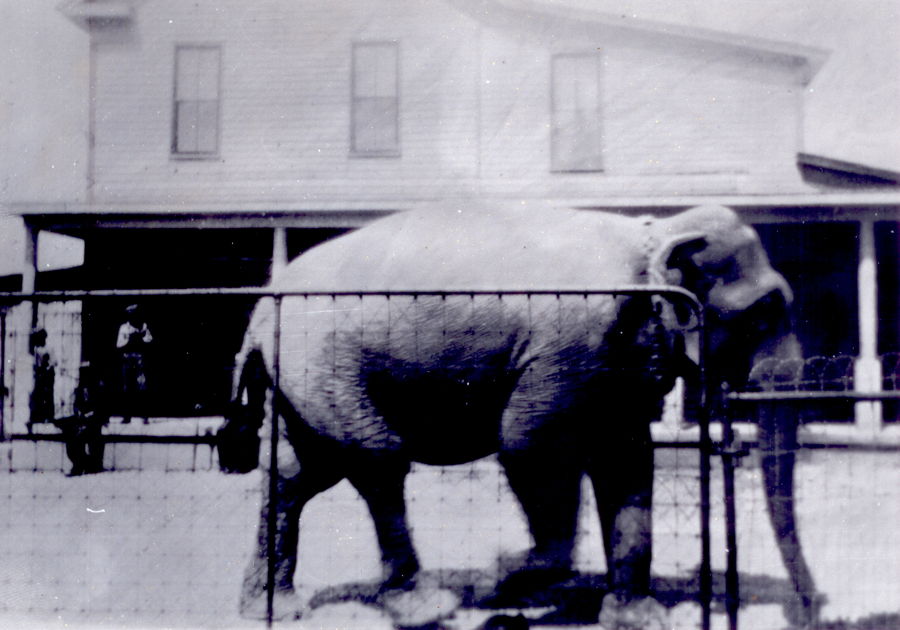
The following article by Charles Hartley originally appeared in The Courier-Journal on 7 Dec 2014. It is archived here with additional information for your reading enjoyment.
The valley of Long Lick Creek had been the center of a growing population for several decades when a spur railroad line passed through it from Bardstown, and connected to the main Louisville and Nashville line in March 1860. With this the small community around where the tracks met took on the name Bardstown Junction.
It didn't take long for the community's name to make the newspapers as far away as New Orleans. In August, within a single week, a train struck and killed a man on a horse at night near the junction, and then two trains collided at the junction causing considerable damage and injuries, but no loss of life. [link]
Then, in July 1863, the Civil War came to Bardstown Junction when the advance element of John Hunt Morgan's command encountered Union troops who were attempting to join the forces at Shepherdsville. After stopping the northbound train and robbing its passengers, the Confederates sent it back to Elizabethtown, and burned the railroad trestle over Long Lick Creek, the water tank house, and the stockade before heading toward Brandenburg.
In 1867, with the war over, activity at the junction increased, as did the frequency of accidents along the tracks. In July a misplaced switch resulted in three passenger cars and a sleeping coach being thrown from the tracks. Fortunately most involved received only minor injuries.
Then in November, in the early hours of the morning, a southbound train encountered a large tree that had fallen across the tracks near the junction. While the engine and baggage cars sustained serious damage, there were no significant injuries. [link]
The valley was well suited for growing crops like corn, and the good limestone-filtered springs and wells spurred the growth of whiskey distillation which got its start with the Chapeze brothers who were making whiskey as early as 1867.
While trains were fast becoming the main mode of transportation throughout the area, a need for better roads was becoming increasingly evident. In 1869, Robert Greenwell, William Dawson, Leander Lee, J. P. McAfee, A. H. Bowman, J. F. Smith, and Henry Trunnell obtained rights from the state to organize a corporation for the purpose of building a turnpike road from Shepherdsville to Pitt's Point, by way of Bardstown Junction. [link]
A growing community needed schools and churches, and by 1879 the Catholics purchased a lot near Bardstown Junction from Abram and Pauline Bowman, and two years later St. Eugene was dedicated. It would survive for nearly 40 years before burning down in 1920.
A grade school was established at the junction prior to the end of the nineteenth century, and prospered for many years with such teachers as Sophia Morrison, Lillie Mooney, Mammie Mooney, Jennie Carpenter, Blanche Troutwine, Nellie Vittitoe, Katherine Nusz, Mary B. Hill, Gladys Murphy, Ruth Crenshaw, Christine Stansbury, and Kathryn Harned among others.
One amusing story appeared in The Courier-Journal in the summer of 1881. An unnamed correspondent related, "Something of a wonder happened in our neighborhood a few days ago on the Bardstown branch. In the dry bed of a creek there suddenly burst forth a stream of sulphur water six or eight inches in diameter. The neighbors were greatly astonished; a large number gathered to witness its steady flow; visions of the possible began to loom up in thoughtful minds, and the lucky owners were discussing the project of building an immense hotel to accommodate the immense crowds that were soon to seek the health-giving waters. But, alas, after flowing two days, the stream suddenly disappeared. Some are unkind enough to say the water obtained its sulphur taste from the slops of a distillery near by, but we are not inclined to adopt this 'sour-grape' theory without further investigation."
But the days of sulfur spring spas, and passenger trains would soon come to an end. Today, the valley is still home to distilleries, as well as the nearby Bernheim Forest, but the little junction is hardly noticed anymore; except perhaps when the elephant showed up. So when you next drive down Highway 61, slow a bit as you pass over the tracks that mark the little community of Bardstown Junction.

Copyright 2014 by Charles Hartley, Shepherdsville KY. All rights are reserved. No part of the content of this page may be included in any format in any place without the written permission of the copyright holder.
The Bullitt County History Museum, a service of the Bullitt County Genealogical Society, is located in the county courthouse at 300 South Buckman Street (Highway 61) in Shepherdsville, Kentucky. The museum, along with its research room, is open 10 a.m. to 4 p.m. Monday through Friday. Saturday appointments are available by calling 502-921-0161 during our regular weekday hours. Admission is free. The museum, as part of the Bullitt County Genealogical Society, is a 501(c)3 tax exempt organization and is classified as a 509(a)2 public charity. Contributions and bequests are deductible under section 2055, 2106, or 2522 of the Internal Revenue Code. Page last modified: 13 Jan 2024 . Page URL: bullittcountyhistory.org/memories/bardjct.html